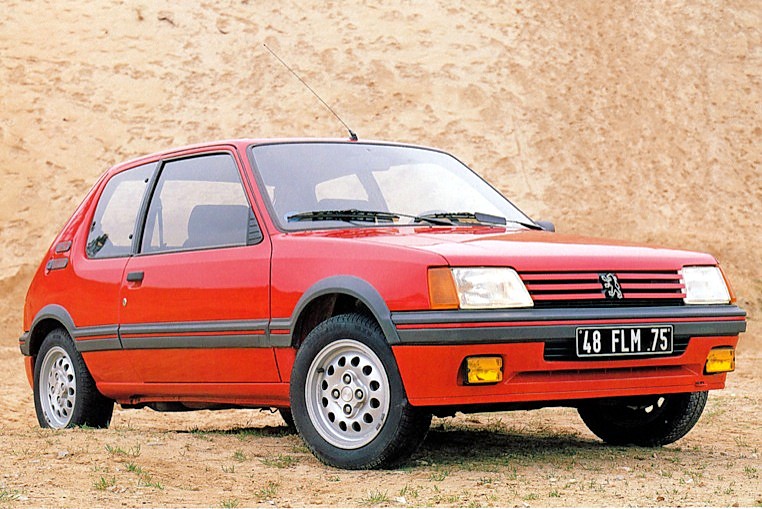By David Pike
With the introduction of the 205 in 1983, Peugeot set itself the challenge of producing from scratch a small hatchback which would stand out in a crowd. Not only did it achieve this but it created one with such street cred that it became a cult car almost overnight.
A total of 2.74 million Peugeot 205s were produced during its production life.
Most remarkable of all is that it was Peugeot that achieved this, not Volkswagen or arch rival Renault. Suddenly, it seemed, Peugeot ditched its frequent slow introduction of new products, preferring to wait and watch the trends set by other manufacturers, and pitched in against the rest. Certainly this new-born Lion cub heralded a great revival for the company.
The total range comprised three and five-door four-seater hatchback bodies and a two-door four-seater cabriolet, although the GTi came only as a three-door four-seater hatchback.
The GTi had a slightly chunkier, squarer look than its sisters – certainly a more aggressive one with its full-frontal spoiler, extended wheel arches, connecting rubbing strip, alloy wheels with low profile 185HR 60 rubber, built-in driving lamps and red lined exterior trim.
The 1580cc OHC engine used initially, with its 78 kW output, certainly packed a punch. Equipped with Bosch L-Jetronic fuel injection, a top speed of 190km/h was quoted and a 0-96km/h dash in 9.2 seconds was claimed.
Subsequently the power of the 1.6-litre GTi went up to 86 kW while the new 1.9-litre version produced 91 kW.
Car testers raved about these engines. In fact, one went so far as to say: “This car is a flying machine and should not be underestimated. It weighs as much as a damp piece of lettuce and handles amazingly. Over-steer is easy to control and it can embarrass plenty of more expensive cars on a circuit.”
More impressive than the sheer speed of the car was the way it handled. Testers often mentioned that the car felt incredibly responsive but above all, it seemed right. You could climb straight in and feel immediately at home from the hugging velour seats to the easy-to-reach controls. Out on the road, the balance and sheer manoeuvrability came as something of a revelation and would bring a smile to the face of even the most cynical soul.
Most owners thought the ride was about right for a car of this type; it was certainly firm but Peugeot stuck to sensibly large wheels and these minimised severe jolts over potholes.
The 250GTi was a great all-rounder. It was not expensive, totally reliable and had one of the best performances in its category. Some drivers thought the engine and handling so good this little Peugeot earned the go-cart image. The original suspension certainly gave a skateboard ride, but improved with softening.
But as many drivers found, the 1.9-litre engine could test skills when pushed towards its considerable limits.







